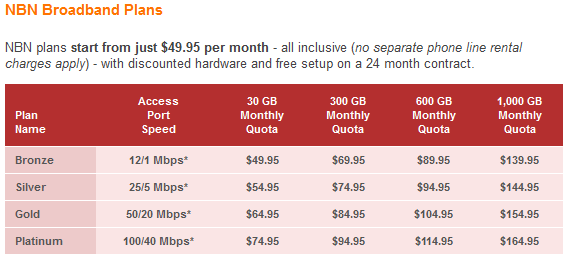Yesterday, Telstra shareholders voted in support of the deal offered by the federal government and NBN Co. At a glance this deal appears to offer Telstra $11billion compensation for access to its infrastructure facilities, and for the decommissioning of the copper network.
For me, the technicalities of this deal are almost immaterial in terms of public welfare. Welfare is improved by having the infrastructure in the ground and using it. The corporate and market structure for achieving this is mostly a way to shuffle the costs and benefits between parties. I personally see no problem with government pursuing the NBN, even though I suspect there are more cost-effective ways to provide the intended level of service.
So what do I see as the key issues?
First, there is the question around why government investing in a new telecommunications monopoly when the past three decades have seen almost all other government monopolies privatised.
I don’t have the answer to this question, but I do hold the opinion that this is an appropriate intervention by government justified by basic economic principles. There are a number of reasons I support government involvement, including:
- Government control brings forward fibre network investment compared to private provision, which may have taken another decade to eventuate. With network investment there is always gaming by private enterprise – every company wants someone else to go first because once another company has invested in the infrastructure, there is a chance to declare the asset for open access through the Trade Practices Act 1974 (Part IIIA).
- High-speed internet is a means to improve equality through access to information and services. This is why the NBN has objectives for national coverage.Private investment would not have the social equality element that seems so important when access to a service is considered by many as a public service. The flip-side involves the various disagreements about the ‘fairness’ of the rollout timing between the States, and accusations that the roll-out is being targeted are politically sensitive electorates.
- Cost savings may be possible for other government services through provision online enabled by faster interenet access
- Ubiquitous access to high-speed internet will facilitate productivity gains in other sectors. Of course most private investment also has external productivity benefits, so this alone should not be a justification for government owned production
- Economies of scale for construction of the network may be possible at a degree not available to smaller private enterprises
These all sound like very noble reasons for government involvement. In fact, I would argue that much of the privatisation movement was more a product of ideology than rigorous analysis of social benefits (how’s private banking working out?). One critic at the recent Telstra shareholder meeting noted this very point:
I don’t think a company that’s been sold should be able to be dictated to and told what to do,” one shareholder said. The Government made a mistake by selling it in the first place and now they don’t know what to do because Telstra owns all the infrastructure. They should have thought of that before they sold it.
A secondary issue is the question over the cost at which these benefits being provided.
We know that $40billion is ballpark figure being discussed as the total cost of the network. One could reasonably interpret this as a bare minimum estimate. It is often forgotten that the NBN will likely provide a commercial rate of return to the government, so the cost is actually being borne by households that prefer slower internet at a lower cost, rather than the taxpayer generally, or those who prefer the faster, but more expensive, internet service.
I would argue that this revenue structure is not optimal. Given that many of the arguments in favour of a government provided NBN are related to external benefits and equity concerns, why should this cost be borne by direct users? In fact the greater the uptake of broadband, the greater the external costs. One could easily argue that the requirement for the NBN Co to make a positive return on all capital undermines the social objectives of the investment.
My personal view is that if, say, 25% of the total social benefits of the NBN are external to users – comprising reduced costs of government services provision, equality concerns, and the bringing forward flow-on productivity benefits – then this portion of costs should not be funded directly fron users, and prices for NBN users should therefore be derived from a lower cost base.
If we look at current NBN prices from my provider, Internode, we can see that the price for comparable speeds and quotas as existing ADSL2+ is very similar, if not higher (ADSL2+ prices in the bottom table). If NBN wholesale prices were based on a reduced cost base, then it is likely that the service provided would be both cheaper and superior in terms of quality.


In the end, the debate boils down how best to provide a fibre-optic network. The NBN plan as it stands is probably a gold-plated option, but if we look through the history of government infrastructure provision, new private owners have rarely complained about over-engineered features of their facilities. Also, we need to be assured that unlike the household budget, there is no direct impact on the funds allocated to other government services. So while we debate about shuffling benefits and costs around between interested parties, the big picture is that government facilitating the provision of this fibre network is probably in the public interest.
Tips, suggestions, comments and requests to [email protected] + follow me on Twitter @rumplestatskin